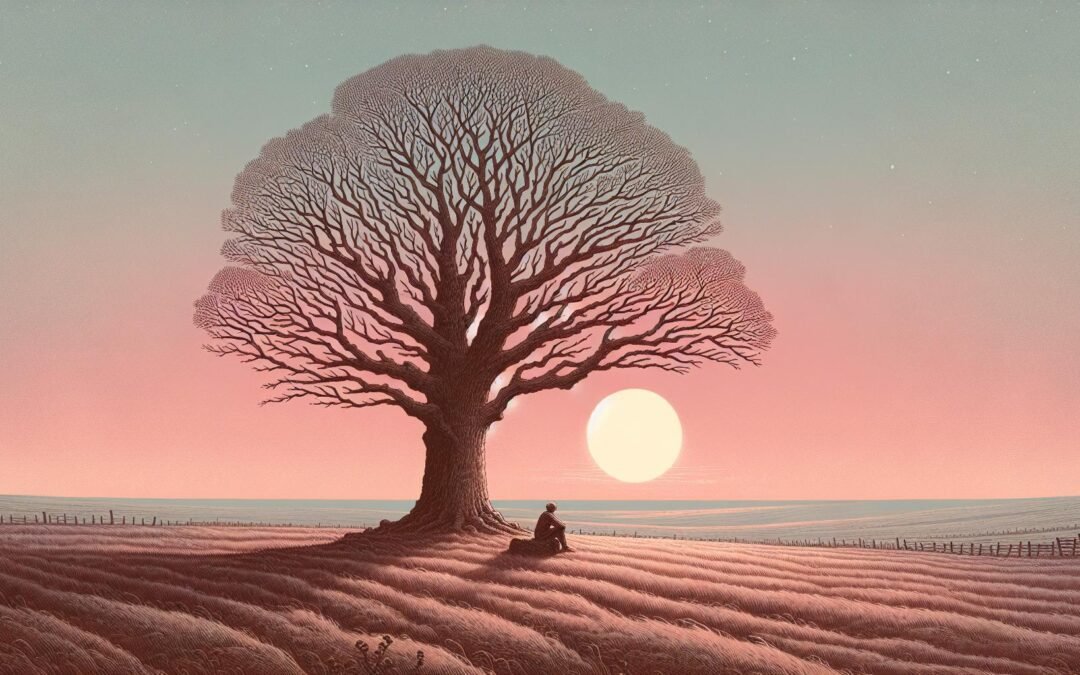Isolation poetry constitutes a distinct tradition within literary art, channeling solitude, separation, and estrangement into meticulously crafted verse. Its force is neither generic nor accidental. Instead, these works reflect on withdrawal as experienced from inside, transforming isolation into the organizing logic for vocabulary, structure, rhythm, and theme.
Isolation Poetry: Boundaries, Evolutions, and Global Contexts
This poetic mode takes root in situations ranging from enforced exile, monastic seclusion, urban anonymity, or spiritual retreat. The effect is one of conscious harnessing of aesthetic distance, fixation on liminality, and immersion in the sensory atmospheres of silence or enclosure. Best contemporary poets have revisited the theme, translating silence and self-containment into the marks of modern disquiet or resilience.
Sappho’s fragments, produced in archaic Greece, already register desire as a function of separation not only from beloveds but from a communal sense of identity. Her elliptical form foregrounds the gap, using abrupt schisms in language to amplify longing. Tang-era Chinese poet Wang Wei, drawing from currents of Taoist philosophy, position wilderness as both literal solitude and metaphor for internal space. In this context, the landscape transforms: mountains become the edges of thought, water signals the fluidity of memory. A relevant comparative study can be found at the Poetry Foundation, which hosts extensive analysis of cross-cultural lyric forms and motifs.
The English tradition, shaped profoundly by Romantics, leverages isolation both as a mark of genius and as a testing ground for vision. Wordsworth’s solitary encounters with nature are never simple backdrops but active scenes of psychological trial. To walk alone, encountering clouds or daffodils, means navigating the fluctuating line between connected perception and dissociation. Shelley, memorializing Keats in “Adonaïs,” refines poetic loneliness into an elemental drama. These poets mine the pain of removal, blending it with cosmic and metaphysical estrangement.
Narrowing to the American inheritance, Emily Dickinson poetry exemplifies perhaps the most architecturally innovative style of seclusion. Dickinson populates her texts with rooms, windows, and interstitial spaces that both contain and provoke the lyric self. Her symbolic vocabulary, the bars, panes, and circumscribed lawns, renders isolation as a recursive theme, simultaneously threatened by exposure and reinforced by form.
Modernism amplifies fragmentation as both subject and structure. T. S. Eliot correlates urban solitude and psychological dispersal. The crowd is not merely a setting but a swarm of failed connections; compositional disjunction stages absence as an essential presence. The interplay of silence, hesitancy, and interruption embodies the anxiety of language and experience in the metropolis.
Postwar Continental poetry, scarred by genocide, reconstitutes isolation as a linguistic problem. Paul Celan’s compression and radical ambiguity reflect not emotional preference but survival after unspeakable trauma. Here, dislocation is absolute, and solitude is coded in syntactic dissonance and fractured imagery. Celan’s innovation lies in using absence as material, creating poems that resist both sentimentality and complete transparency.
Contemporary isolation poetry continually adapts. Poets such as Ocean Vuong interrogate distance through the prisms of migration, sexuality, and war. Their approach reframes separation, extending it into the politics of voice, visibility, and memory. The COVID-19 pandemic spawned a layer of poetic response tuned to digital absence and enforced physical barriers, proving the enduring flexibility and urgency of this tradition. A searchable archive on Poetry International features samplings of isolation-centric poems across continents and traditions.
Formal Strategies and Psychological Dynamics
Isolation poetry thrives on imagery that encodes emptiness or restraint. Closed rooms, locked doors, unfurnished spaces, and silent landscapes serve as metaphors for psychic conditions. Syntax is pared or suspended, generating tension between utterance and voicelessness. Sometimes a line breaks mid-thought, creating a visual equivalent of spatial interruption. Through these choices, poets make silence audible and separation palpable.
The lyric “I” frequently dissolves or disguises itself. Authors employ second or third person perspective as camouflage, disperse agency, or simulate an absent audience. Monologue allows for ongoing self-confrontation, while apostrophic addresses reach toward unreachable presences. These techniques collapse or distort the boundary between speaker and world, forcing the reader into a role of witness, confidant, or estranged counterpart. Metaphors in poetry are vital to building this atmosphere, shifting from architectural terms to natural or bodily imagery.
Psychologically, isolation poetry operates both as record and instigator of alienation. Classical psychoanalytic theory places emphasis on internal division, using repression, withdrawal, and latency as creative drivers. Freud’s structuring of the psyche aligns with the fragmentary forms that organize many isolation poems. Where connection fails or recedes, language becomes a primary site of negotiation.
Philosophical existentialism intersects particularly at the point where solitude becomes ontological: a ground condition, not an accident. Poets influenced by Kierkegaard and Sartre resist closure, preferring ambiguity and the dramatization of anxiety. Martin Heidegger’s vision of “Being-in-the-world” augments this position, recasting language as both haven and limitation. Within this environment, the poem itself acts as both chamber and labyrinth, sheltering thought yet admitting uncertainty.
Isolation should not be equated with deprivation alone. Creative withdrawal has, for centuries, served as a crucible for attention, exhilaration, and inventive risk. Virginia Woolf and Gaston Bachelard, theorizing the poetics of “room” and “house,” recognize solitude as a matrix for association and spontaneity. The interplay of privation and abundance anchors the genre, sustaining its capacity for both suffering and generativity.
Key Case: Emily Dickinson’s Cartography of the Alone
Emily Dickinson’s poetry offers a unique topography of self-crafted isolation. From her room in Amherst, she constructed a world of apparent minimalism whose internal dynamics seethe with tension. “I’m Nobody! Who are you?” immediately posits a speaker who denies public identity and seeks intimacy in separation. The poem frames anonymity as a space for authentic encounter. Dickinson’s “There’s a certain Slant of light” imbues her environment with oppressive, almost spectral, implication. Light, usually a liberating agent, becomes weight that settles on consciousness. Her unique punctuation, especially in Emily Dickinson lines, signals both interruption and absorption, a textual strategy that materializes psychological disjunction.
Rooms and thresholds recur with obsessive regularity, but so do windows and garden boundaries. The self addresses absence, not in complaint but in analytic scrutiny. Dickinson’s brevity, refusal of direct closure, and idiosyncratic syntax build a language that acknowledges what cannot be named. Her withdrawal never becomes sterile; instead, it energizes the process of turning inward.
T. S. Eliot and Modernist Estrangement
In “The Love Song of J. Alfred Prufrock” Eliot advances the isolation poetry project by interpolating the self within crowds. The city delivers profusion of impressions, but little genuine encounter. The poem’s speaker, set adrift in rooms and streets, grasps for meaningful address but fails to break the shell of selfhood. Eliot’s modernist methodology (collage, repetition, parataxis) fashions fragmentation into both style and substance. The speaker’s hesitations, rhetorical questions, and delayed confessions accumulate into an unbearable tension. Memory becomes obstacle as much as refuge, while language itself reveals its inadequacies.
Here, vulnerability acquires aesthetic function. The partial utterance, incomplete image, or abrupt shift in address positions reader and narrator in mutual uncertainty. Such techniques, detailed at “The Love Song of J. Alfred Prufrock“, encode disorientation and highlight the dissolution central to isolation poetry.
Celan, Migration, and Linguistic Absence
Paul Celan, rooted in postwar Europe, writes from an abyss where language nears collapse. In “Death Fugue,” and later poems, he shatters syntax and invents neologisms in an attempt to articulate what survived the Shoah. Celan’s lines seek difference, not totality; his poetic voice repeatedly finds itself marooned from home and tradition. Alienation, in Celan, takes on lexical and phonetic reality, as the boundary between self and world turns fluid but never disappears.
Reading Celan, one confronts both the relics of collective catastrophe and the silence where speech runs out. Memory and loss repeat as motifs, providing the parameters of a poetics that resists the privilege of reconciliation. This project bears directly on evolving definitions of isolation poetry: the genre becomes not only aesthetic practice but a historic mode of testimony.
Contemporary Transformations
Recent figures have catalyzed further shifts in isolation poetry. Ocean Vuong’s texts braid inherited trauma with diasporic longing and queer experience, collapsing the boundaries between personal withdrawal and communal absence. Migrant poetries foreground passage, waiting, and remoteness as transnational realities, not only private burdens. Social isolation under digital capitalism or pandemic quarantine has been reconstituted in lyric form by a wave of younger writers whose engagement signals new genres and voices.
Across languages and continents, poets are expanding the vocabulary of aloneness while interrogating its sources and uses. In all periods, the tradition remains alive to innovation. The continuing evolution of isolation poetry testifies to its enduring capacity to interpret, endure, and transform solitude into creative presence.

